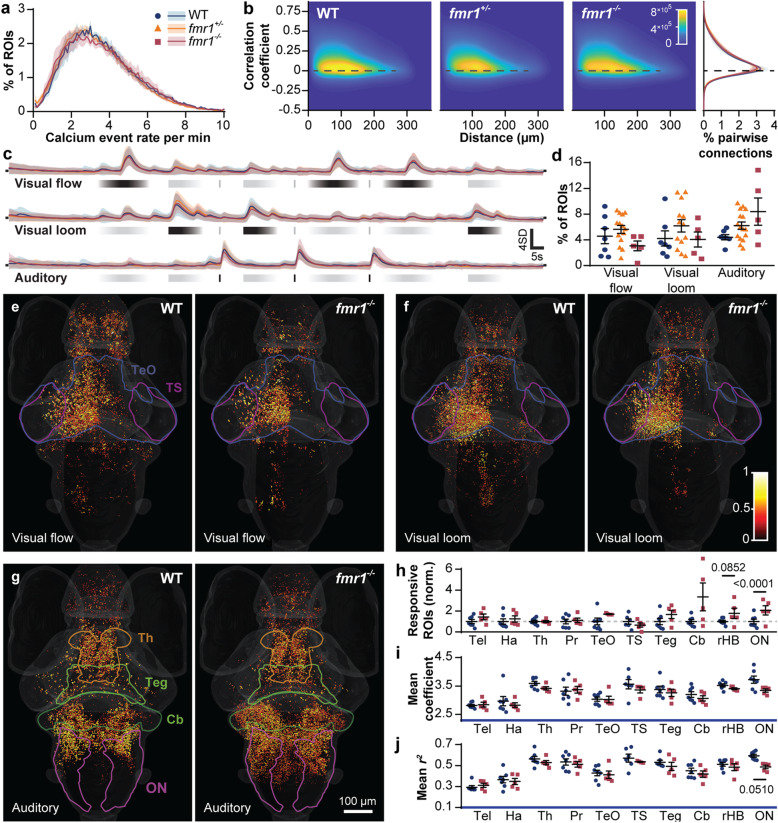Fig. 2.
Brain-wide baseline and sensory-evoked neuronal activity. Distribution of brain-wide calcium event rates (a) in WT, fmr1+/−, and fmr1−/− larvae at baseline (mean ± s.e.m.). Heat map (b) of the correlation coefficient between pairs of ROIs as a function of their Euclidean distance, with the distribution of all coefficients (right) showing no marked differences between genotypes. Z-scored activity traces (c) of all ROIs responding to stimuli for each genotype (mean ± SD). Percent of ROIs (d) in the whole brain responding to each stimulus (mean ± s.e.m). Brain-wide responses to visual flow (e), visual loom (f), and auditory (g) stimuli (all panels equivalent to five larvae), where spot color represents response strength (regression coefficient) and spot diameter depicts coefficient of determination (r2 value). Ratio of ROIs (h), mean regression coefficients (i), and r2 values (j) in WT versus fmr1−/− responding to the auditory stimulus across various brain regions (mean ± s.e.m.). ON, octavolateralis nucleus; rHB, remaining hindbrain (without the cerebellum (Cb) and ON); Teg, tegmentum; TS, torus semicircularis; TeO, optic tectum; Pr, pretectum; Th, thalamus; Ha, habenulae; Tel, telencephalon. P values ≤ 0.1 are shown

